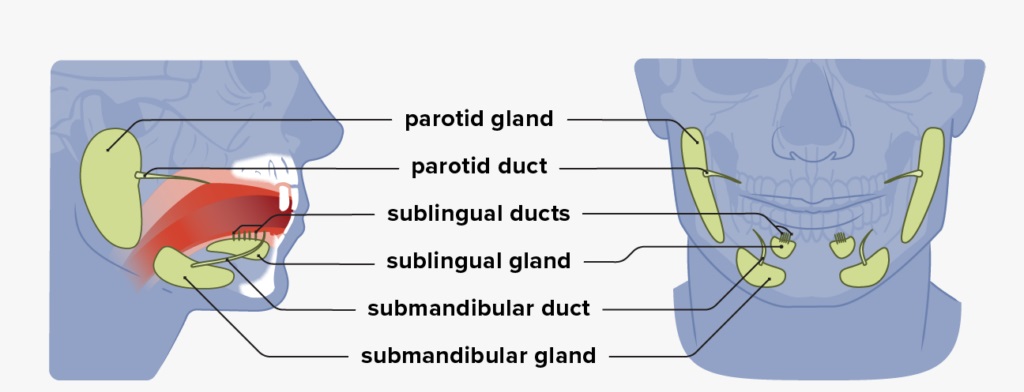
Salivary gland (SG) cancer and tumors
Salivary gland (SG) cancer and tumors refer to abnormal growths within the salivary glands, which are responsible for producing saliva. These glands include the parotid, submandibular, sublingual, and numerous smaller glands within the mouth and throat. While most salivary gland tumors are benign (non-cancerous), a percentage develop into malignancies (cancerous). The diversity of cells in the salivary glands leads to various types of tumors, each with different characteristics and treatment approaches.
Types of Salivary Gland Tumors
The majority of salivary gland tumors originate in the parotid gland, with fewer arising in the submandibular and sublingual glands or minor salivary glands. Some of the common types include:
- Pleomorphic Adenoma: The most common benign tumor, usually found in the parotid gland.
- Warthin’s Tumor: Another benign tumor that typically occurs in the parotid gland, often affecting smokers.
- Mucoepidermoid Carcinoma: The most common type of malignant salivary gland tumor, which can vary in aggressiveness.
- Adenoid Cystic Carcinoma: A malignant tumor known for its slow growth but potential to spread to distant sites, including the lungs and bones.
- Acinic Cell Carcinoma and Adenocarcinoma: Other types of malignant tumors with varying degrees of aggressiveness.
Symptoms of Salivary Gland Cancer
Symptoms may not be present in the early stages of the disease. As the tumor grows, symptoms may include:
- A lump or swelling in or near the jaw, or in the neck or mouth
- Persistent pain in the area of the salivary gland
- Difficulty swallowing or opening the mouth widely
- Numbness or weakness in part of the face
- Fluid draining from the ear (if the parotid gland is affected)
Risk Factors
Risk factors for salivary gland cancer are not well-defined but may include:
- Older age
- Radiation exposure, including previous radiation therapy
- Workplace exposure to certain substances, such as nickel alloy or silica dust
- Family history of salivary gland cancer (rare)
Diagnosis
Diagnosing salivary gland cancer typically involves:
- Physical Examination: Checking for lumps or areas of swelling in the head and neck.
- Imaging Tests: Ultrasound, CT scans, MRI, and PET scans can help visualize the tumor’s size and spread.
- Fine Needle Aspiration (FNA) Biopsy: The most definitive way to diagnose salivary gland cancer, involving the extraction of cells from the tumor for examination under a microscope.
- Sialography: Rarely used, this test involves injecting a dye into the salivary ducts before taking X-rays to detect tumors or blockages.
Treatment
Treatment options depend on the type, size, and stage of the tumor, as well as the patient’s overall health:
- Surgery: Often the first line of treatment, aiming to remove the tumor along with a margin of healthy tissue. In some cases, lymph nodes in the neck are also removed.
- Radiation Therapy: May be used post-surgery to destroy any remaining cancer cells, as a primary treatment for patients who cannot undergo surgery, or to relieve symptoms of advanced cancer.
- Chemotherapy: Less commonly used for salivary gland cancer and typically reserved for advanced stages or tumors that have spread to other parts of the body.
- Targeted Therapy and Immunotherapy: Emerging treatments that target specific pathways or mechanisms involved in cancer cell growth and spread are being explored in clinical trials.
Conclusion
Salivary gland cancer is relatively rare, and the prognosis varies widely depending on the tumor type, stage at diagnosis, and response to treatment. Early detection and treatment are crucial for improving outcomes. If you experience any persistent symptoms affecting the salivary glands, it’s important to seek medical evaluation promptly.
To book online select the date and time that suits you best – alternatively, please contact us with any questions via the chat, call or email links provided.
Telephone: 020 7101 3377

